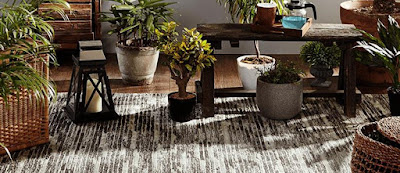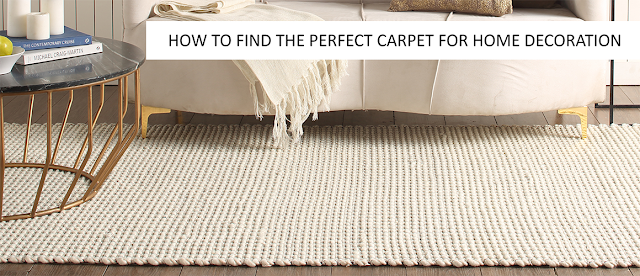What Makes Indian Rugs So Different From Others?
What makes rugs crafted in India so popular? After all, oriental rugs are also made in China, Iran, Turkey, and other countries. Yet, the demand for Indian rugs doesn’t abate. If we distil it to just one reason, then it’s the heritage Indian carpets represent. They are not mere coverings for a floor. They are a legacy that ties together a space and lasts for more than a lifetime.
But to genuinely capture what makes Indian rugs so unlike other carpets, we need to discover all the elements. It begins with a rich and long history of rug-making.
1. Weaving skills passed down through generations
The art and skill of weaving carpets came to India along with Akbar in the mid-1500s. The Mughal emperor most likely brought with him Persian weavers and artisans to weave carpets for his palace. That laid the foundation for carpet making in the country, creating hubs in what is now known as Agra and Delhi.
Badohi, a city near Agra, can date its rug crafting tradition to the 16th Century. Even today, the majority of the city is connected to the handmade rug industry. Similarly, Panipat, a city located near Delhi, is renowned for its carpet making.
The skills of weavers in both these cities are passed down from one generation to another. It has created a pedigree in rug making that is unmatched. As a result, Indian rugs have become synonymous with quality. But more than that, it is the intricate artistry that speaks volumes.
The practice of carpet weaving that has survived for centuries enables current artisans to bring motifs, details and rich hues that are rarely possible elsewhere. From the designs of Herat to modern, contemporary designs, the community of weavers in India can bring into reality any carpet.
2. Handmade, one-of-a-kind Indian rugs
Handmade is another reason why Indo rugs are a class apart. Starting from spinning the yarn and ending with using a loom to weave, each process involved in making a carpet is manual. And since handwork necessitates effort and time, it takes longer for an Indian rug to be completed.
However, that wait is worth the effort. Being handmade, each carpet is one-of-a-kind, not just another piece from an assembly line. Put them under the microscope, and you’ll notice such elaborate details that make the pattern unrepeatable.
It’s this art that transforms strands of yarn tied by hand into pieces of art. And that’s why people clamour to have in their homes - unique rugs with slight human imperfections that make them all the more perfect.
The motifs used in the hand-woven rugs adds one more layer to their popularity. Often inspired by nature, surroundings, monuments and carvings, the design style is restricted to just India. That’s not to say Indian handmade carpets don’t come in floral, geometrical or solid patterns. They do. From classic styles to the latest trends, you’ll find all sorts of designs. Indian carpet markers are adept at translating your tastes, visions, and expectations into yarns.
3. Strength, durability and high-quality rugs
The techniques used to fabricate Indian rugs lend them strength and durability, making them last a long, long time. For instance, handloom rugs that are made with two intersecting yarns have a latex material backing. It makes the carpets stronger and prevent unravelling.
The textured flat-woven rugs that are effortless to fold and carry are no less durable. Weaved either on a pit loom or a Punjaloom, they are very lightweight but remarkably robust.
What gives hand-knotted Indian rugs their strength?
Three factors: the size of the yarn, the type of knot and the strength of the knot itself. Take a closer look at a carpet made in India, and you’ll quickly notice the dense knotting. The number of knots in a square inch ranges from 25 to 194, depending upon the type of rug. For some custom carpets, the density can be even higher. Consequently, each Indian rug can have millions of knots, forming an incredibly sturdy framework that speaks of top-notch quality.
How long do Indian carpets last?
A testament to the quality and strength of carpets from India is the number of years they last.
- A hand-knotted carpet made with a warp thread has a lifetime of over three decades. The higher the knot density, the longer they last, even when placed in a high traffic area. The reason being the tightly woven knots hold the fibres in place. This ensures the thread doesn’t pull out over time.
- A handloom rug with an interweaved weft thread has an endurance of ten to twelve years. These can last longer depending on the quality of the backing.
- Flatweaves made from the intersection of weft and warp threads have a lifetime of over a decade.
- The strength of hand-tufted rugs is a little different. They are made by punching wool strands into a canvas backing, and then a latex material is applied to keep the tufts in place. It adds solidity to the rug. The number of holes in the fabric define the durability of a hand-tufted rug. While their pedigree is not the same as hand knotted Indian rugs, they can easily last for five to seven years.
4. A variety of superior raw materials
Why is an Indo Gabbeh so different from a Persian Gabbeh? It’s the raw material. Indian carpets use a variety of materials, and all of them are of superior quality. Each material, from silk to hemp, lends its own characteristics to the rug, making them suitable for different areas of the home.
For example, wool is the most common rug material because it has been proven to break only after 10,000 bends. It makes wool rugs tremendously durable. Plus, they don’t shed or stain easily. Silk is another raw material that Indian carpets utilize. They are softer to touch, but slightly more expensive than wool. That’s why, usually, a blend of silk and wool is used make rugs.
Indian carpets are also made of cotton, bamboo, jute and viscose. Cotton rugs are washable, lightweight and easy on the wallet. The length of bamboo silk is long enough and strong enough to hold knots in place. So, you’ll find it in plenty of hand-knotted rugs. Jute carpets are great for outdoors and indoors because the fibres are coarser than other raw materials.
India also makes rugs from nylon, viscose and polyester. But all of them are prone to breaking or shedding. Therefore, they are typically used for machine-made carpets.
5. A rainbow of colours in Indian rugs
The penultimate reason why Indian rugs are so different from others is colour. We’ve spoken before about how the right carpet colour can influence not just the room but the emotions of the people inhabiting it. It makes choosing the right shade and hue critical.
Indian carpet weavers understand this fact inherently. That’s why you’ll find muted, pastel-toned rugs that give the illusion of bigger spaces. You’ll also discover bright and bold colours in carpets that make a statement. You’ll further find yarns in rich shades to emphasize intricate patterns in a design.
But it’s not just for aesthetics that Indian rugs come in a rainbow of shades. Each colour is carefully chosen, often with a more profound meaning behind it. The yarn is then hand-dyed to match the selected colour.
The process is laborious and requires attention to detail because the dye impacts the look of the final rug. Some carpet manufacturers in India rely on plant-based dyes to promote sustainability. Being natural, the dyes make the rugs kid and pet-friendly.
6. Bespoke, custom rugs made to order
Choosing a rug for your home is a deeply personal preference. The chances that you’ll find a ready-made rug that panders to your taste to the very last knot are average at best. What you need in those moments is a custom rug, and that’s what craftsmen in India offer.
You can tailor the dimensions, colours, or design of a carpet to fit your space, décor, or style. Or better yet, get a made-to-order rug that’s weaved from scratch according to your vision. These bespoke rugs become invaluable when the room for which you’re looking for a carpet has odd dimensions or the interior décor is already in place.
Finding an Indian rug for you
A tradition rooted in the very DNA of weavers, high-quality materials, intricate designs, and rich colours are just some reasons Indian rugs are in demand globally. They are not a luxury. They are an investment that you can hand down to generations that have yet to come.
At Marwar Carpets, we are your one-stop-shop for all things carpets with clients spread across the USA, Australia, the Middle East, and Europe. From ideation to doorstep delivery, we partner with you for every stage of rug making. Our community of weavers and craftsmen produce some of the best rugs in India. And we help offer their skills and artistry to a global market through our ISO certified manufacturing setup in Panipat.
Each rug we weave is a timeless and ethical beauty that becomes an heirloom for you. Dedicated to excellence, elegance, and authenticity, we keep true to the Indian tradition of weaving. We now invite you to find a rug that befits you with us!



Comments
Post a Comment